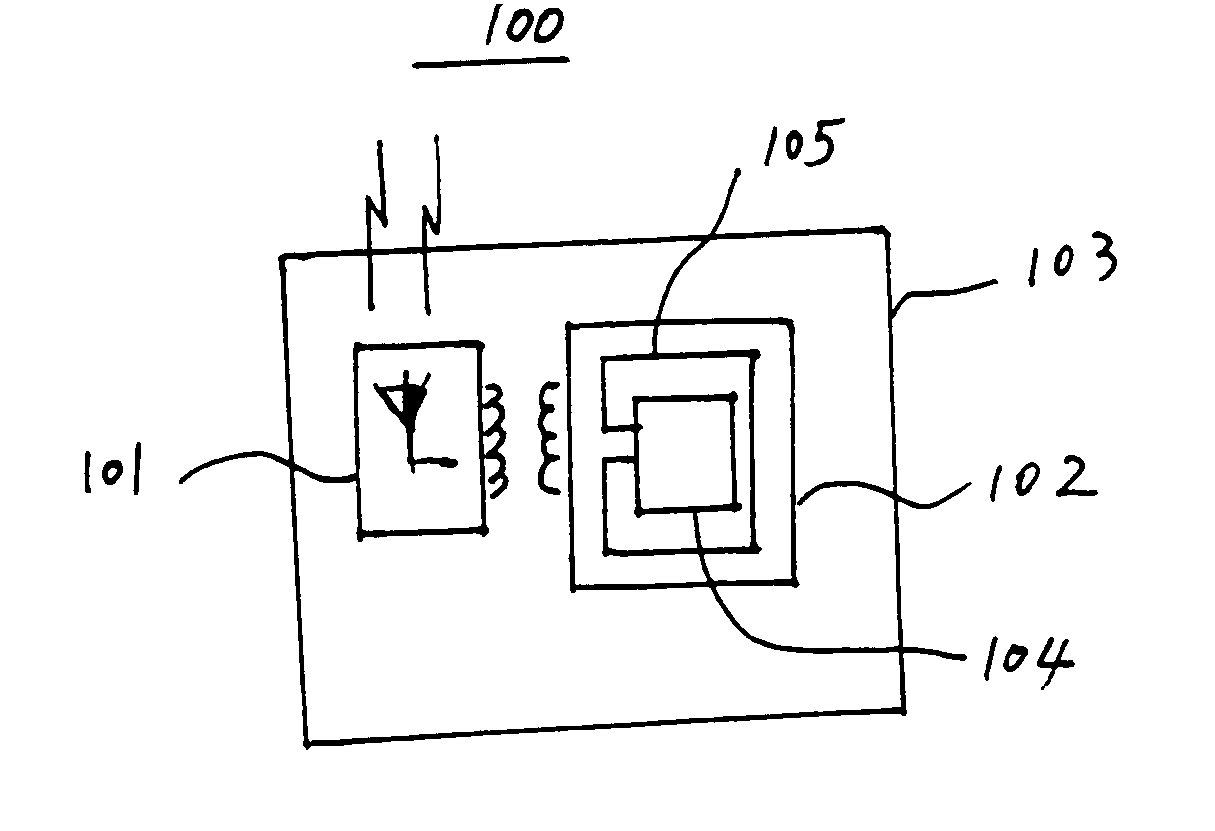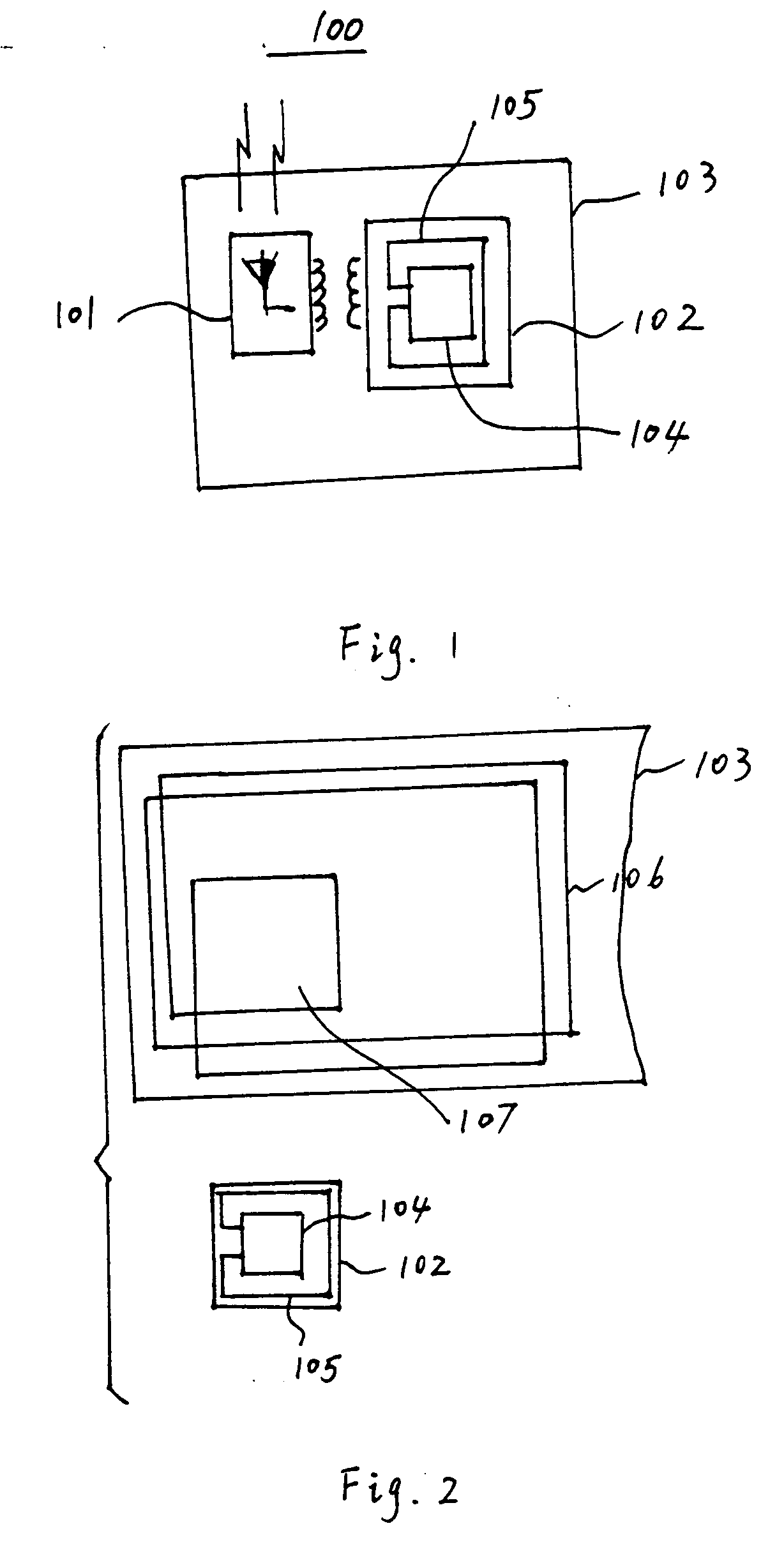Radio frequency identification tag having an inductively coupled antenna
a radio frequency identification and inductively coupled technology, applied in the field of radio frequency identification tags, can solve the problems of limiting the ability to make cheaper and smaller rfid tags, adding to the cost of rfid tags, and conductive electrical connections, so as to improve reliability, reduce assembly costs, and increase flexibility
- Summary
- Abstract
- Description
- Claims
- Application Information
AI Technical Summary
Benefits of technology
Problems solved by technology
Method used
Image
Examples
Embodiment Construction
[0012] Referring to FIG. 1, an RFID tag 100 according to the principles of the invention includes a radiating element or antenna 101 and an integrated circuit chip 102. The antenna 101 and chip 102 are placed within or upon a carrier or support 103. The carrier 103 can be a rigid substrate, or a semi-rigid or flexible material such as a sheet of paper or plastic. The radiating element 101 can communicate with both an outside antenna (not shown) and the integrated circuit 102 inside the RFID tag 100. The integrated circuit 102 comprises an electronic circuitry 104 and a coil 105 which is also called an integrated circuit coil. The integrated circuit 102 provides the primary identification functions. It can, for example, store the tag identification and other desirable information, interpret and process commands received from the interrogation hardware and respond to requests for information by the interrogator. Within the RFID tag 100, the radiating element 101 is inductively coupled...
PUM
 Login to View More
Login to View More Abstract
Description
Claims
Application Information
 Login to View More
Login to View More - R&D
- Intellectual Property
- Life Sciences
- Materials
- Tech Scout
- Unparalleled Data Quality
- Higher Quality Content
- 60% Fewer Hallucinations
Browse by: Latest US Patents, China's latest patents, Technical Efficacy Thesaurus, Application Domain, Technology Topic, Popular Technical Reports.
© 2025 PatSnap. All rights reserved.Legal|Privacy policy|Modern Slavery Act Transparency Statement|Sitemap|About US| Contact US: help@patsnap.com



